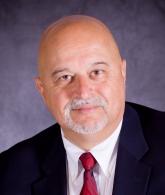Gearing up for OSHA lifting policy changes
As I began preparing this article, I knew I would need to reestablish some ground rules that we have agreed to in previous writings: (1) I am a safety professional and a healthcare risk manager. You will not always like what I have to say. (2) My job is to help you keep your employees safe and secure in the workplace. In doing so, I will not always say what you want to hear and (3) I do not set the rules; I only share them with you. Do not kill the messenger!
In a June 25, 2015 memorandum, the Deputy Assistant Secretary of the Occupational Health and Safety Administration (OSHA) said what those of us in healthcare safety and risk management have known for years: musculoskeletal disorders (MSDs) resulting from lifting- and transferring-related injuries are reaching epidemic proportions in healthcare. And now, as we expected, OSHA is coming after us as an industry.
When OSHA introduced the National Emphasis Program for Long Term Care in 2012, it sent a strong and powerful message that the frequency and severity of occupational injuries to long-term care (LTC) workers was unacceptably high and that these numbers needed to be reduced, or OSHA would do it for us. OSHA went to great extremes to train Compliance Safety and Health Officers in assessing LTC facilities, teaching them how to assess these facilities for specific target hazards.
Now, OSHA is expanding its efforts. As it begins to focus more directly on MSDs, it is also expanding its range to include all categories of inpatient facilities, including hospitals, nursing and residential facilities. In a nutshell, it appears that independent living facilities, assisted living facilities, skilled nursing facilities and hospitals are all in the crosshairs.
So how do we prepare? One of the first steps to compliance is to develop a comprehensive Safe Patient/Safe Resident Handling Plan that provides the following:
- Staff training, patient/resident assessment, workplace assessment, equipment requirements and maintenance, and medical management, including all patient/resident caregivers (e.g., nurses, CNAs, therapists and some activity professionals) in the process.
- Training caregivers in the competent operation of assistance and lifting equipment and correct procedures for lifting and moving patients/residents.
- Training all staff in the recognition of MSD signs and symptoms, and the importance of early reporting.
- Assessment of the workplace layout, including patient/resident rooms, bathrooms, bathing areas and equipment storage locations, to identify the factors that might contribute to patient/resident assistance and lifting injuries.
- Assessment of the high-risk patient’s/resident’s assistance and lifting needs to minimize/eliminate manual physical assists, using the safest and most appropriate lifting, transferring, repositioning and ambulating procedures.
- Prohibition of lifting/transferring without an assistive device.
- Communication of assessment findings to the patient’s/resident’s caregivers.
- Implementation all of OSHA’s recommendations.
- Assurance that necessary equipment and devices are stored at a readily available distance from where the device is required, so as not to impede its use.
- Regular inspection and maintainenance of all assistance and lifting equipment.
- Prompt reporting of all workplace ergonomic injuries to the unit manager. Investigate each injury so that preventive measures can be implemented.
- Establishment of a safety and health/ergonomics committee to address patient/resident handling ergonomic stressors. Incorporate the workers performing resident assistance and lifting tasks to assist in developing solutions, and track and trend patient/resident handling injuries.
Components of a successful policy to address patient/resident handling-related stressors include, but are not limited to accurate injury and illness recordkeeping; occupational health management and treatment for employees suffering work-related injuries/illnesses; workplace analysis of jobs and tasks to assess hazards and the steps to abate them, including a review of the proper use of how and when to use lifting aids.
A successful policy should also include engineering, administrative and work practice controls or actions to reduce or eliminate the hazards, including a review of the proper use of lifting aids and when to use these devices; education and training of workers and management and an effective disciplinary system.
There is also “word on the street” that OSHA will begin enforcing the NIOSH recommendation prohibiting any employee from lifting more than 35 pounds without an assistive device (click on the link provided in the opening paragraph and see attachment 3.1). It would appear that this can be interpreted as applicable whether the 35 pounds is the shared weight of the patient/resident or a bucket of pickles in the kitchen.
Assuming this is true, healthcare facilities would be wise to begin revamping their lifting and transferring policies to ensure compliance in advance. This will prove to be the saving move should you be subjected to an OSHA visit in the next 18 months. It will show your proactive efforts and gain favor with the compliance safety and health officer.
As I’ve said before, do not build a safety program focused on complying with OSHA rules and regs. Build a safety program to protect your workers from occupational illness and injuries.
OSHA and other regulatory standards are there as a resource, and while it is necessary to comply or face monetary penalties, we are still allowed to find ways to comply that fit into our operations and our cultures.
Stay safe and stay in touch!

Steve Wilder, CHSP, STS, is president and chief operating officer of Sorensen, Wilder & Associates (SWA), a healthcare safety and security consulting group based in Bourbonnais, Ill. SWA performs workplace safety compliance audits and security vulnerability assessments in all types of healthcare facilities. Wilder can be reached at (800) 568-2931 or swilder@swa4safety.com.
Related Articles
Topics: Clinical , Executive Leadership , Risk Management , Staffing










